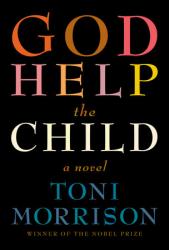
In a 2010 talk with Angela Davis given at the New York Public Library, Toni Morrison told the crowd that on her guest bathroom wall hang both her invitation to receive the Nobel Prize in Literature and a “publication denial notification” from the Texas Department of Criminal Justice informing Morrison that her novel Paradise had been banned from Texas prison libraries. The reason given: the “Publication contains material that a reasonable person would construe as written solely for the purpose of communicating information designed to achieve a breakdown.”
“It seemed like an extraordinary compliment,” Morrison said, “that Paradise could actually blow up into a riot in a prison…The…thing…I’m interested in [is] the perception of…certain kinds of novels, as not just explosive in a dangerous sense, but explosive in a way that could be lethal.”
When an author reaches Morrison’s status—that is to say, when an author is popular, beloved, and highly respected—there is the danger that she and her work lose that lethality. That her name becomes separated from her work and transforms, in wider popular culture, into an intellectual waxwork, or even worse, that the wider culture uses her name as a kind of shorthand. This is arguably even more likely when the cultural figure is a writer or thinker of color. One gets the cachet of a “name”—a “diverse” one at that—to drop into conversation without ever having to explicitly engage with the author’s ideas. It is the hazy dream of “diversity” without any of the real-world dialectics (and accompanying discomfort) of inclusion. In Morrison’s case, other writers have the tendency to refer to her as a mother and a teacher and a genius—and she is all these things. But epitaphs, however well meaning, can sometimes desiccate ideas.
In her eleventh novel, God Help the Child, there’s no danger of desiccation. Morrison’s work is as insistent as ever. She could still be charged with inciting a riot—albeit a quiet one, one that lends itself to pernicious reversals of thinking rather than dramatic implosions.
The novel is set in the present-day and follows Bride, a young, successful cosmetics executive. Bride’s skin is “blue black”; her mother, Sweetness, is light skinned, and because of Bride’s color, Sweetness has withheld affection from her since birth. As a child, Bride briefly gained her mother’s admiration when she testified against Sofia Huxley, a teacher accused of sexually molesting Bride and her classmates. As an adult, her “tar colored” skin now sleek and glamorous, Bride believes herself reinvented, that she has left behind the scared and compromised girl that she was. She becomes involved with Booker, a sometimes musician and academic and another witness to childhood sexual violence. And Bride befriends a duplicitous coworker whom she deludes herself into believing is her best friend, a white woman with dreadlocks named Brooklyn.
Race is a slippery thing in this novel—at times, it’s treated similarly to the way it was in Morrison’s short story “Recitatif”—that is, the traditional markers of race and class are not always clear. The accused child abuser, Sofia Huxley, is white, but when she tells her story in her own words, it is nearly bereft of discussions of race. For Sweetness, however, skin color is a relentless obsession. Bride’s dark skin works in the novel as a kind of litmus test. Sweetness, her mother, perceives it as a deformity; Bride herself treats her color with the cool appraisal of a financial asset; others fetishize it; some view it as something near supernatural; and a few see it as simply a wondrous thing.
Intertwined with these meditations on color is Morrison’s full realization of Bride as a survivor of childhood trauma. This is where the novel is strongest: as a portrait of a life spent obsessing over past emotional, physical, and sexual violence. Bride has suffered a great deal as a child—the nature of this suffering becomes complicated as the novel moves on—and she is obsessed with those childhood hurts to the point of pathology. Bride is in danger of “cling[ing] to a sad little story of hurt and sorrow” that she will “rewrite…forever, knowing the plot, guessing the theme, inventing its meaning and dismissing its origin.”
Because of this, despite being a successful businesswoman, Bride has the passions, pouts, and romanticism of a child. She idealizes her one positive romantic relationship with Booker. “I felt such relief,” Bride says. “No. More than that. I felt curried, safe, owned.” Later, she likens being in a relationship with him to being “colonized.” In Bride’s affection-starved imagination, colonization and ownership are comforting things. Booker is no help to Bride in any of this—he, too, is unable to move past a painful childhood. It “became his own life…his only life.” As the novel progresses, Bride and Booker’s insistence on continuing to view the world through the lens of a child’s hurt has dire consequences.
Bride, Booker, and the novel’s other characters share an obsession with the past, to the point that they are only capable of reacting to the present through the veil of the past. They are incapable of seeing the present for what it is, and this is where the novel’s lethality comes into play. It cunningly demonstrates the debilitating effect of stubbornly clinging to a traumatized state, of asking the present to account for a past it may or may not have created. It’s a necessary revelation for our current cultural moment, obsessed as it is with the buzzwords of trauma—“trigger warnings” and “desensitization” and “survivor”—but not particularly interested in figuring out ways to actually heal it.
God Help the Child is a restless, lively thing, corporeal enough to leave a light fingerprint on you, to still breathe faintly on the back of your neck even after you’ve closed the pages and set it down to sleep.







